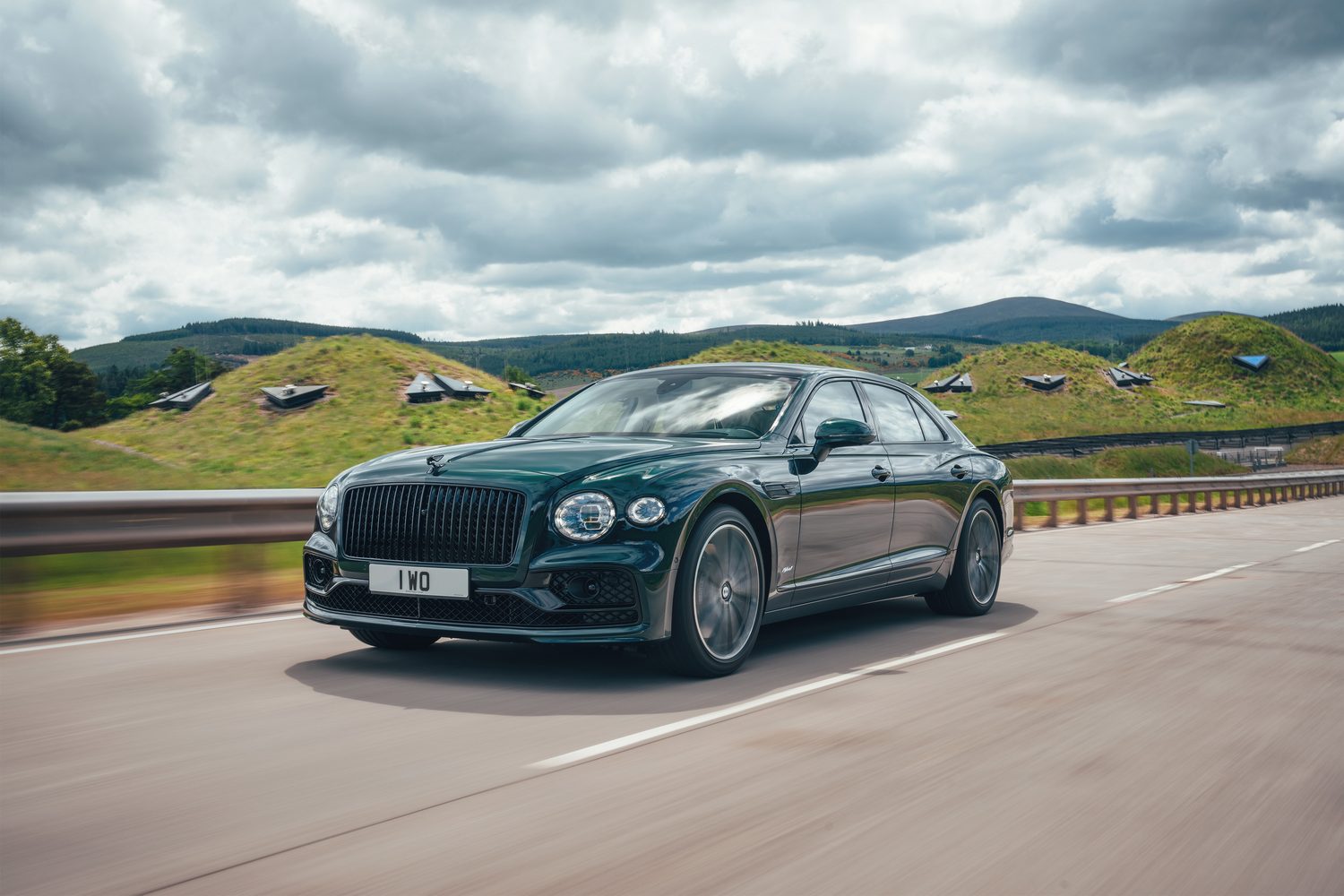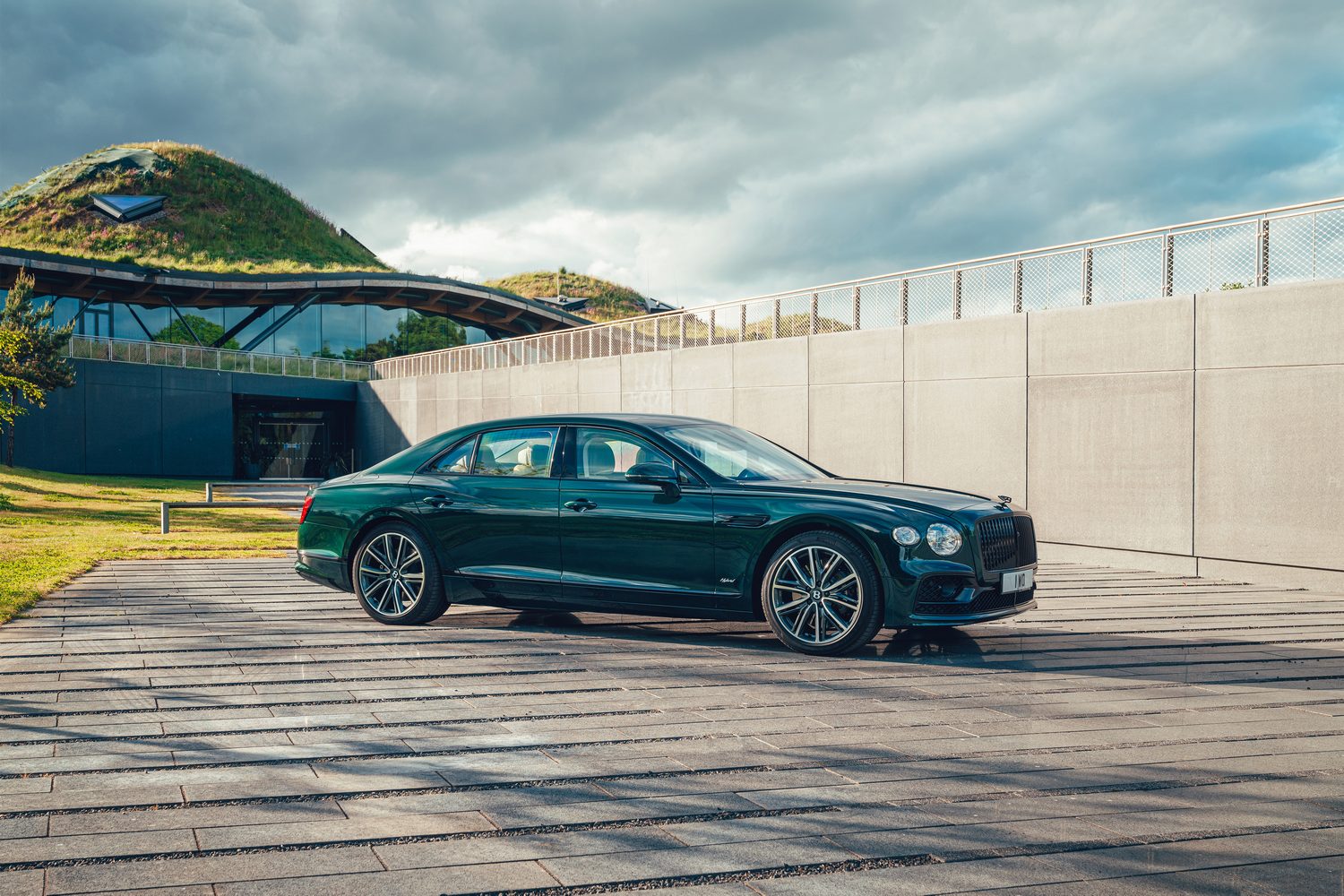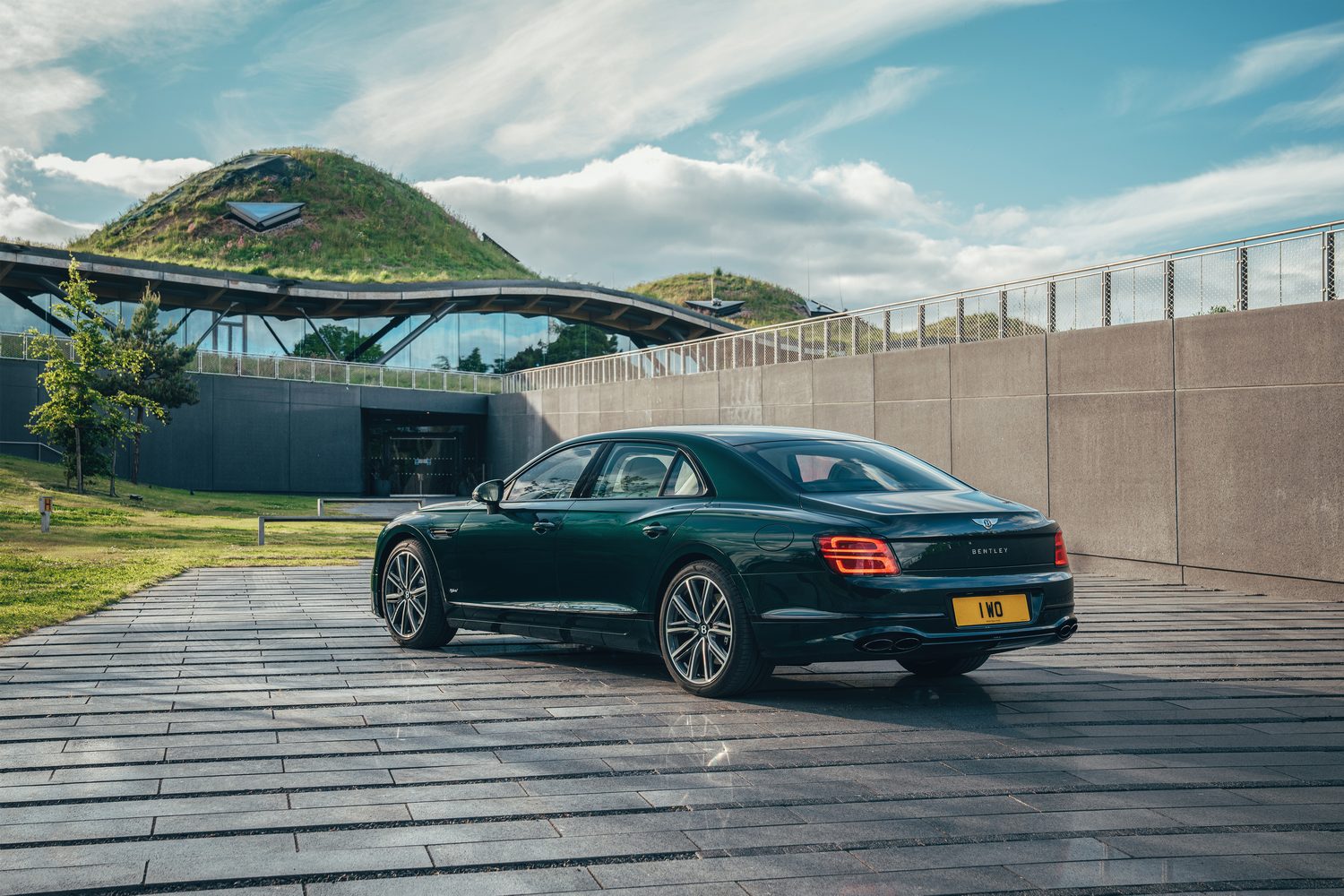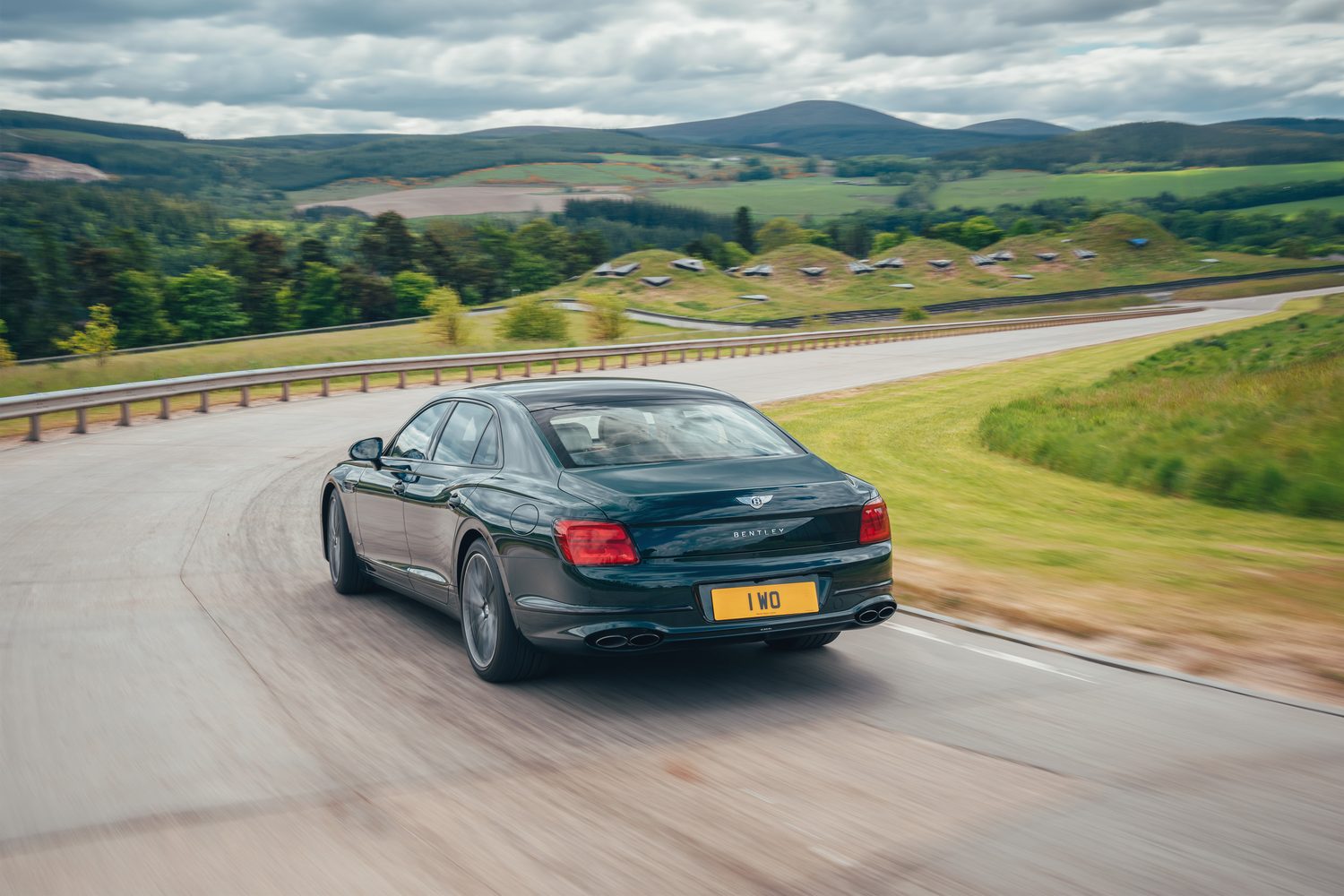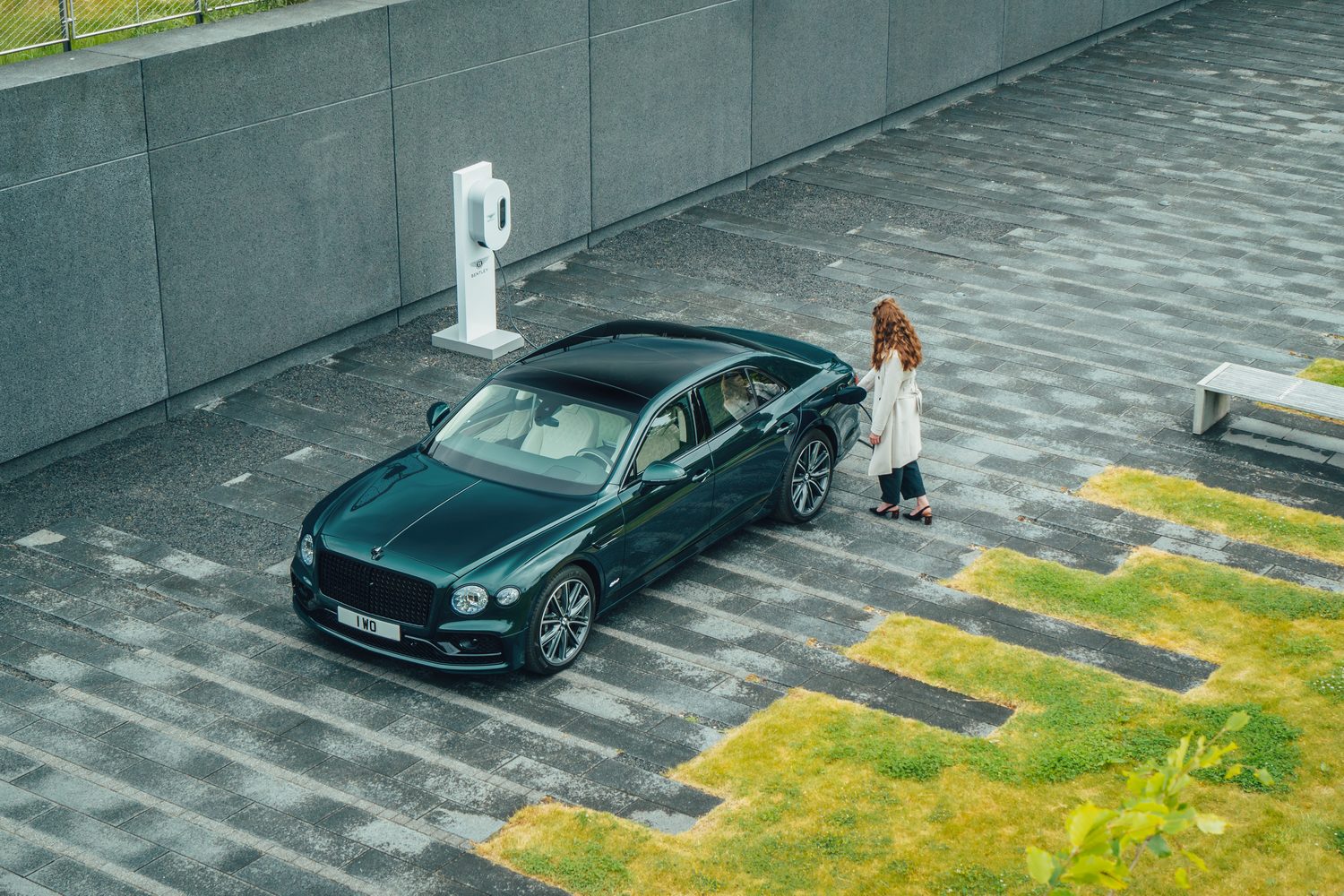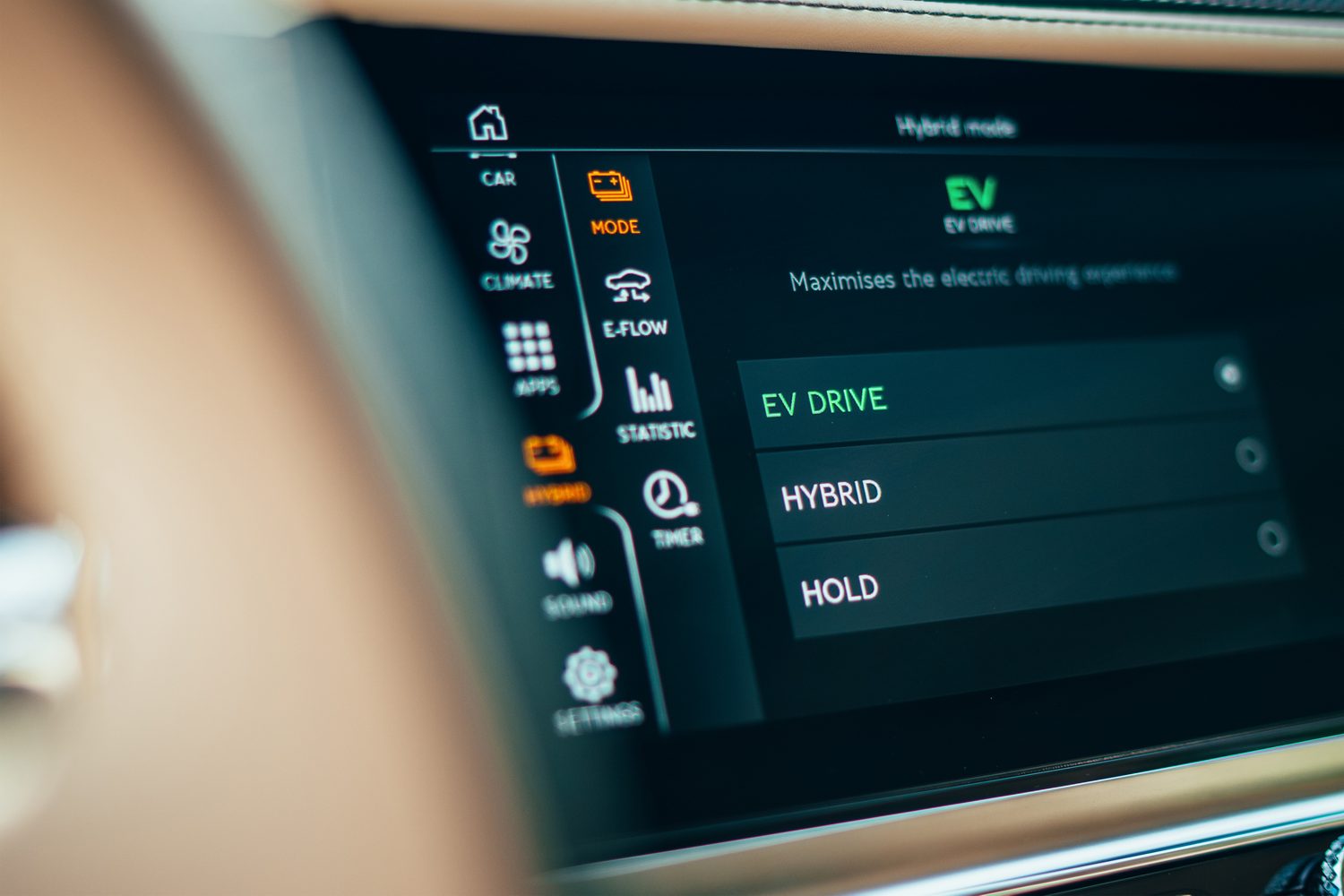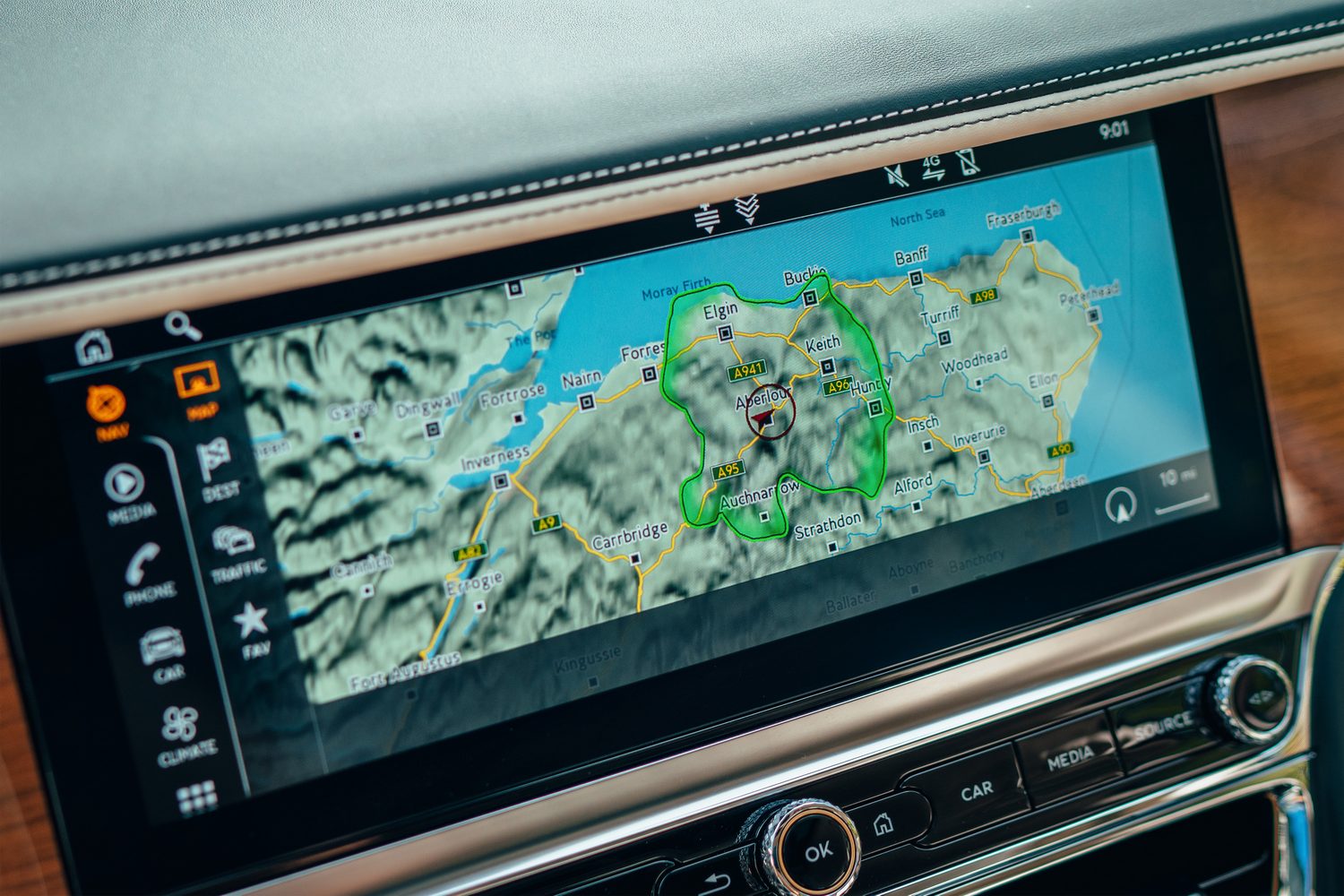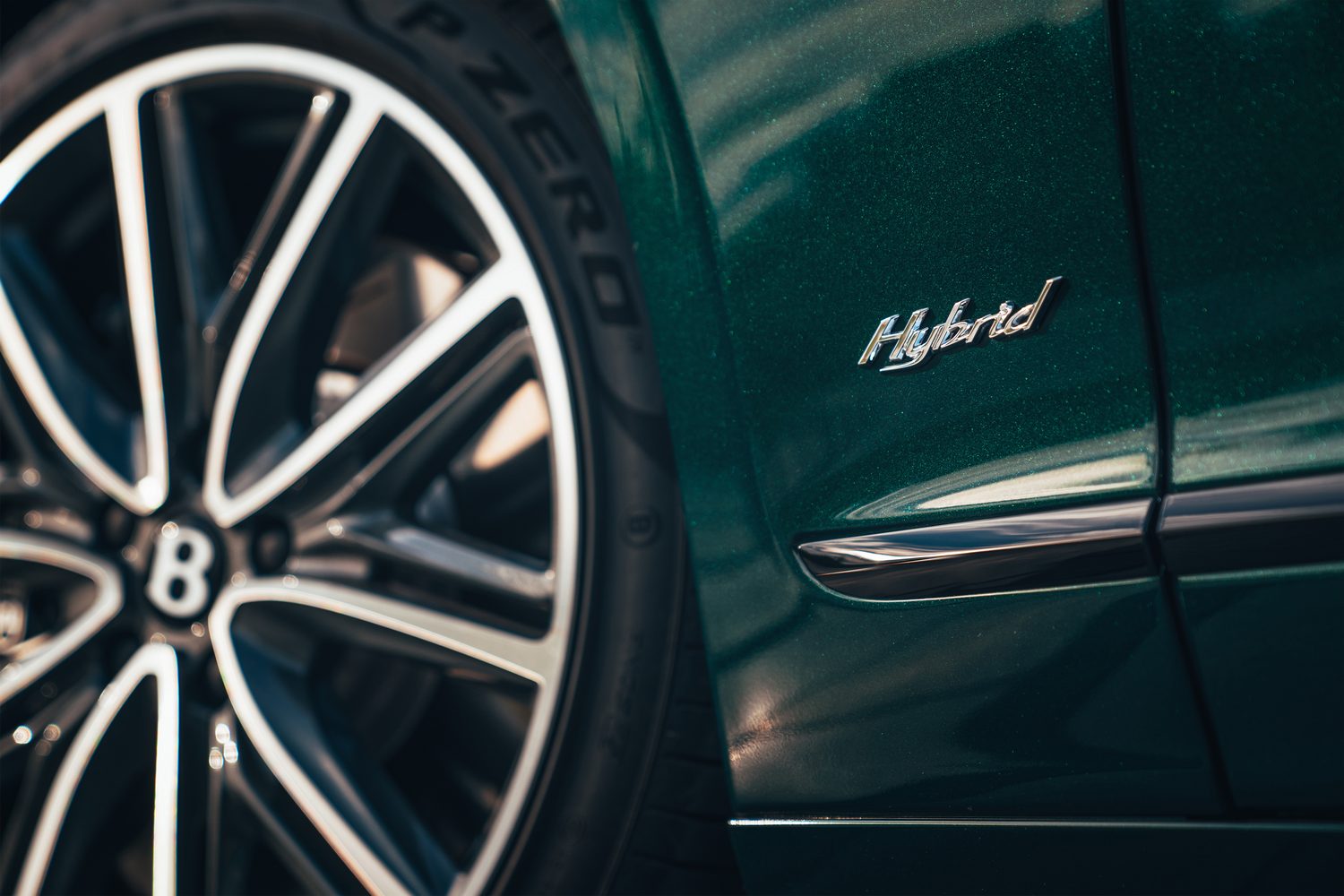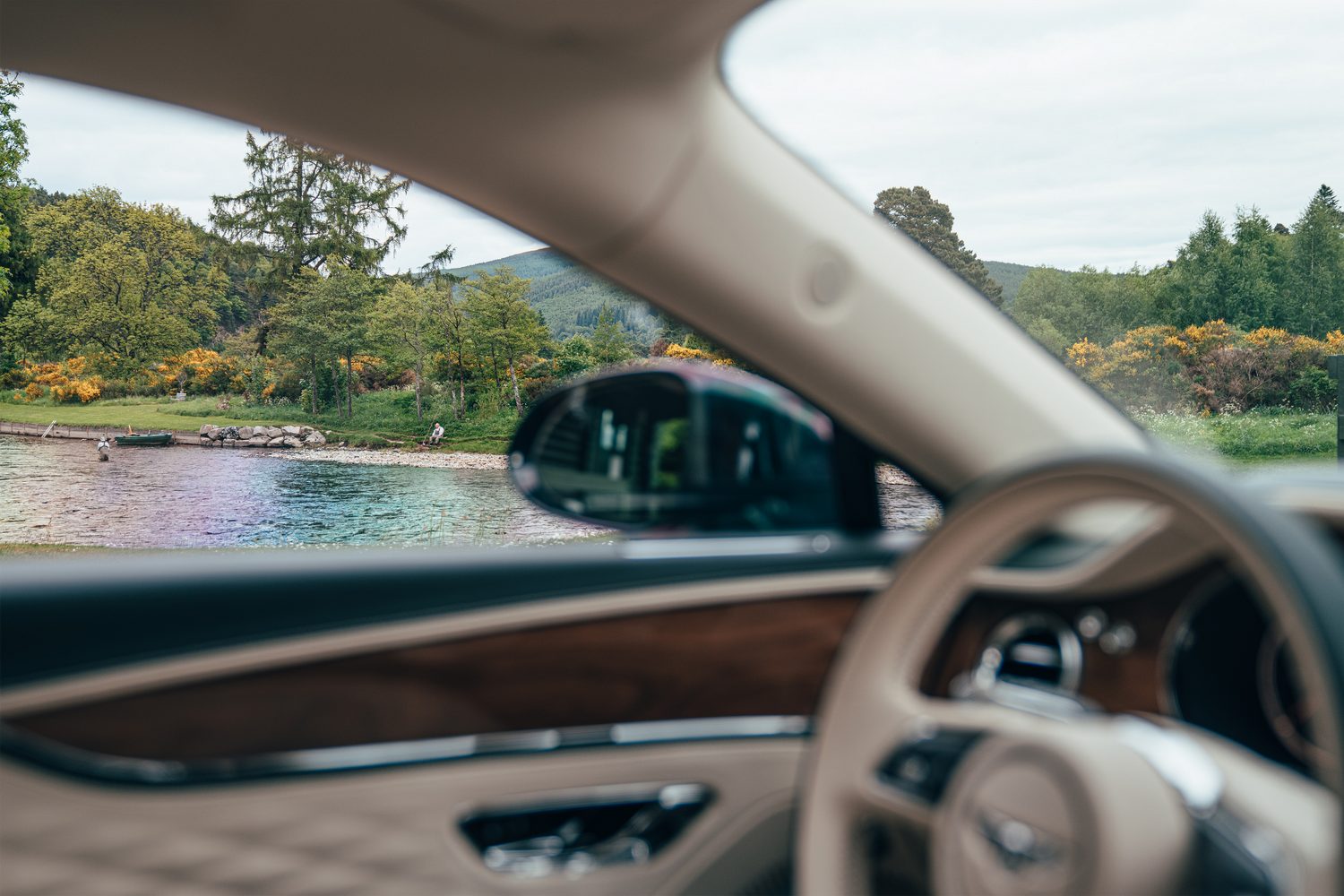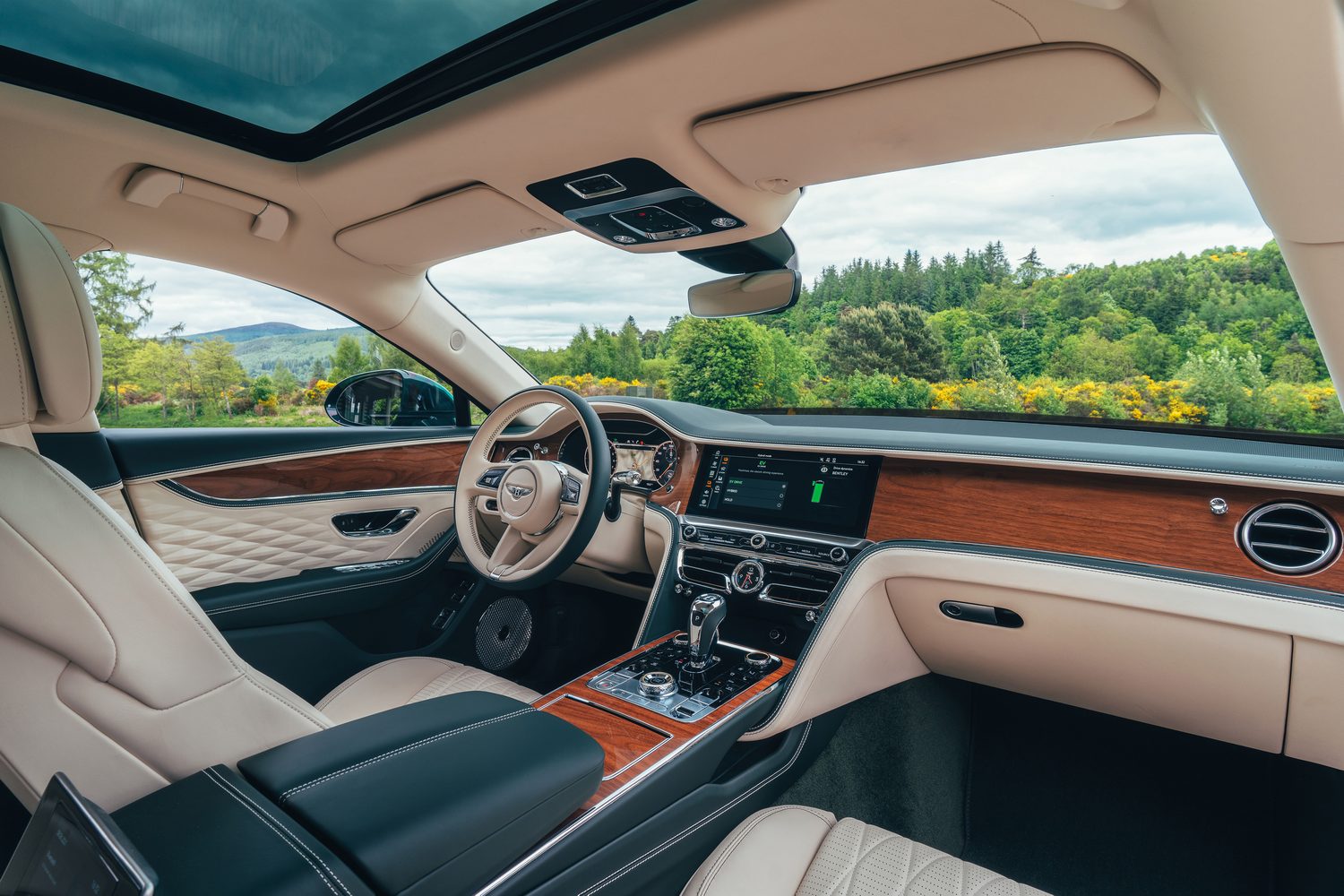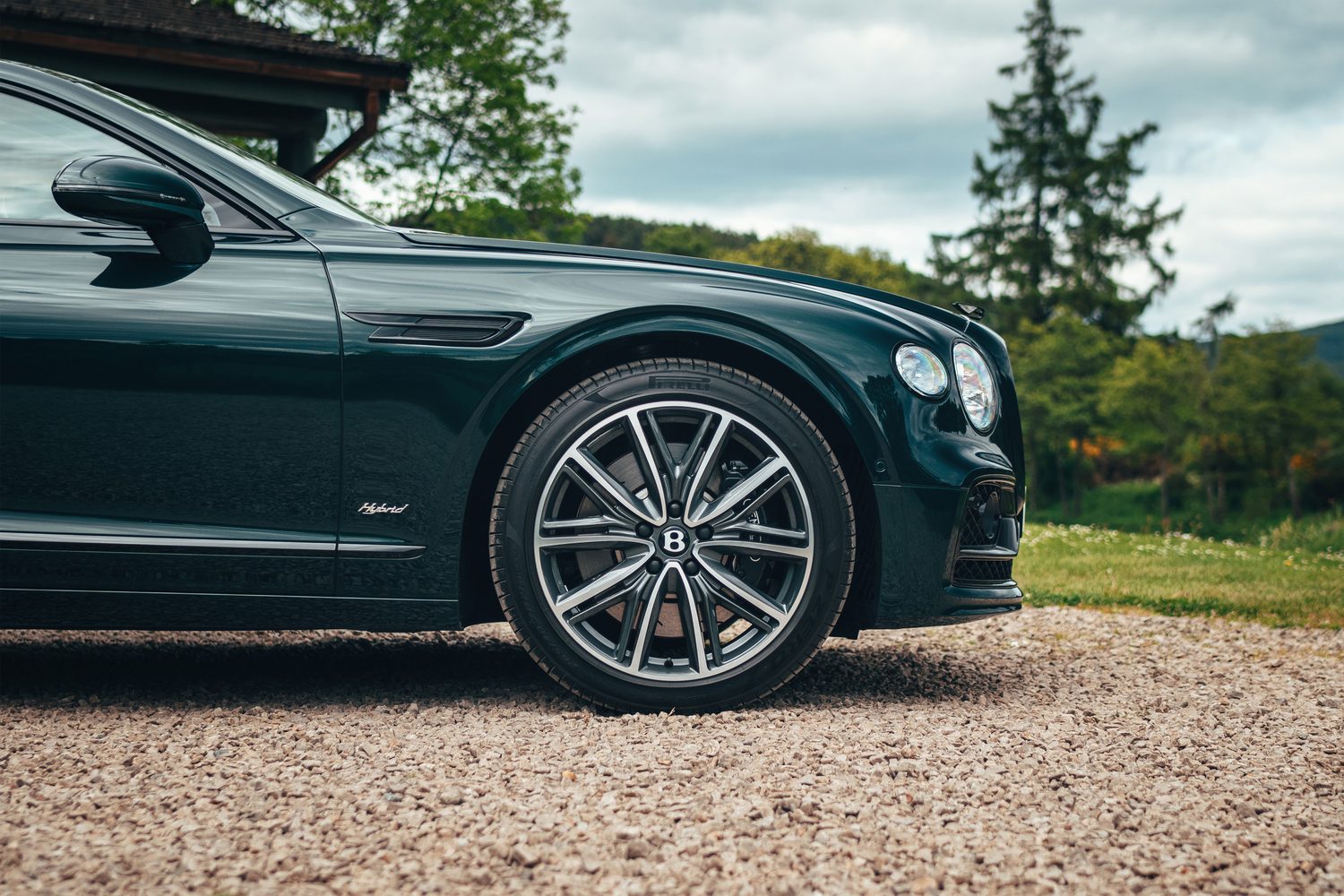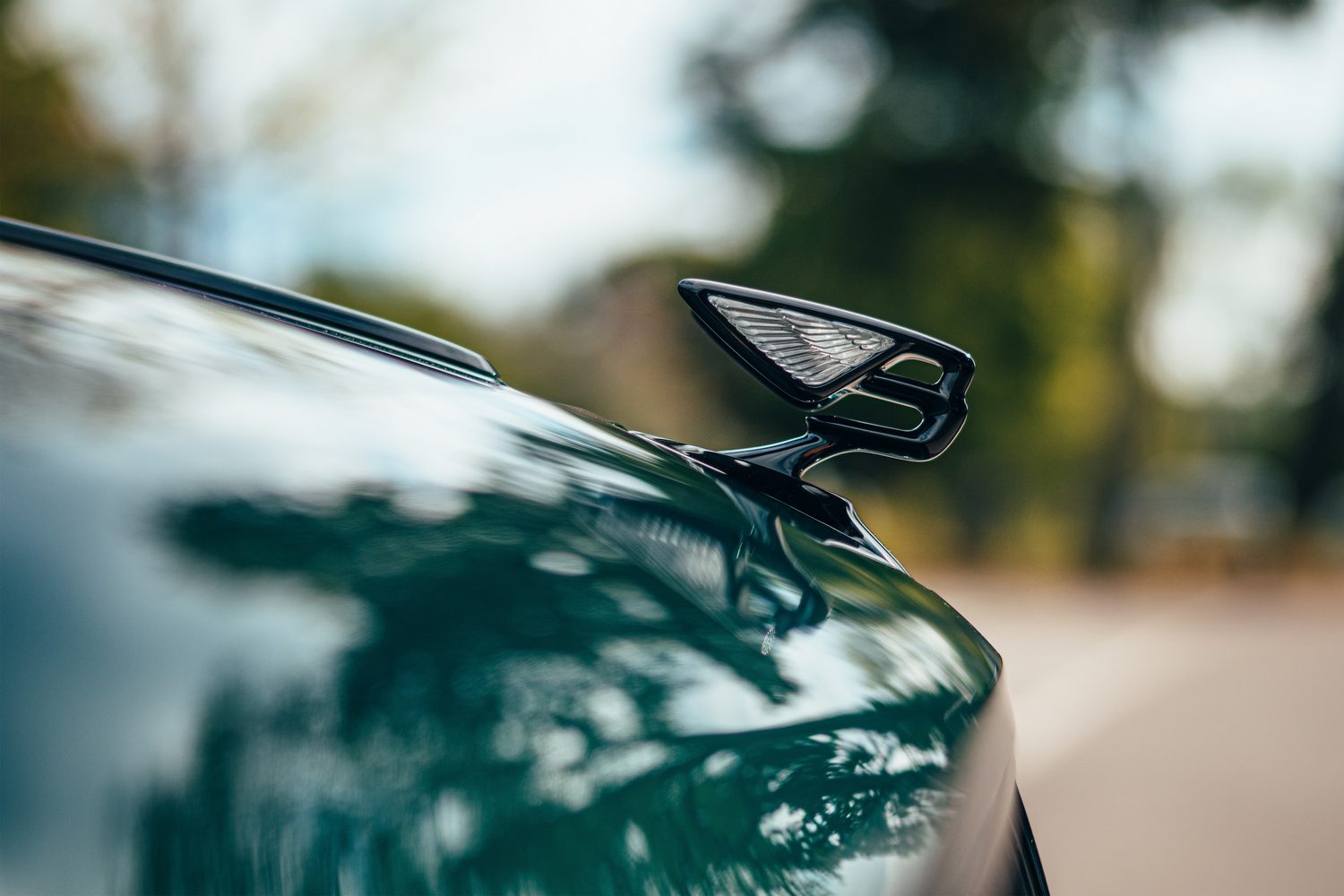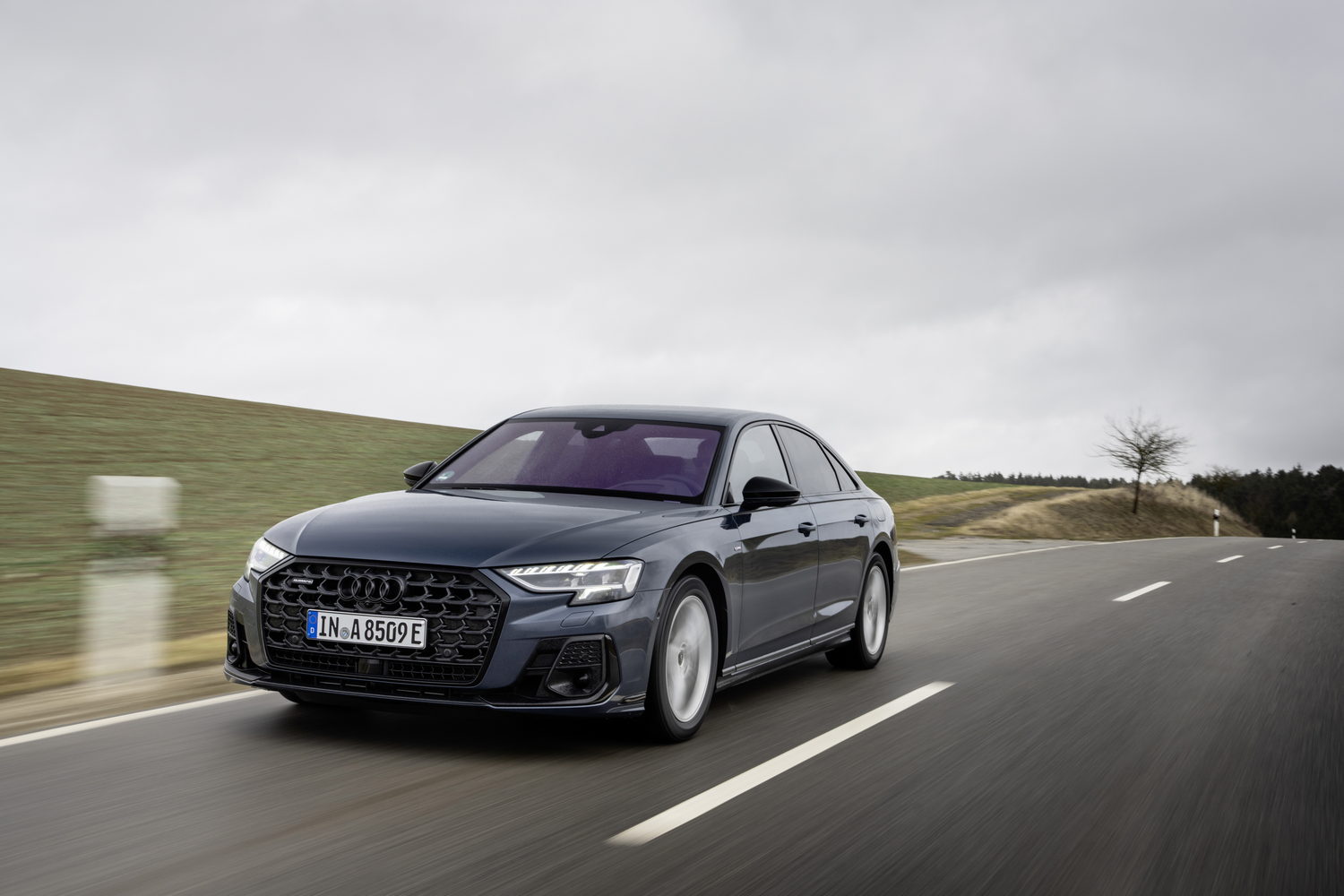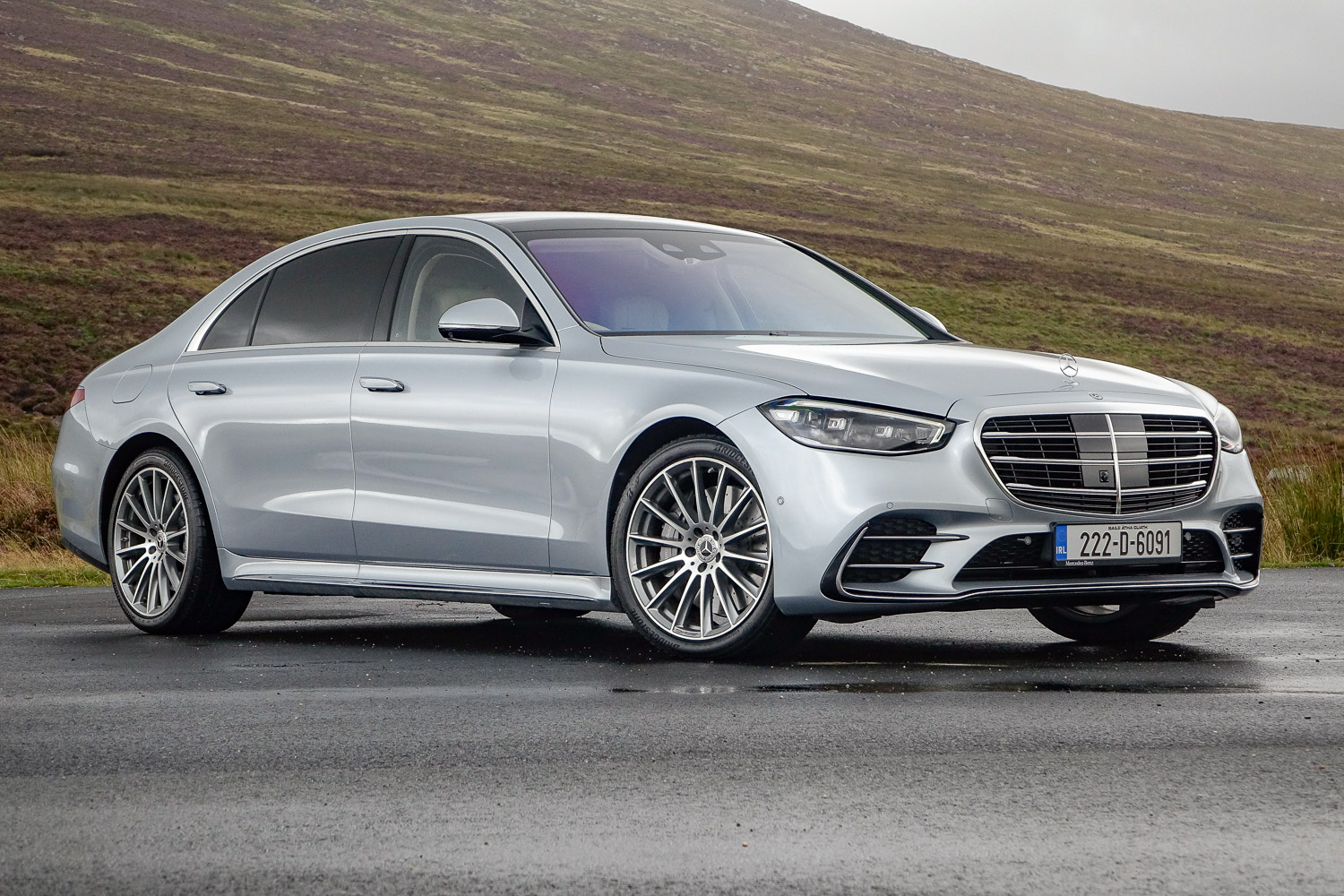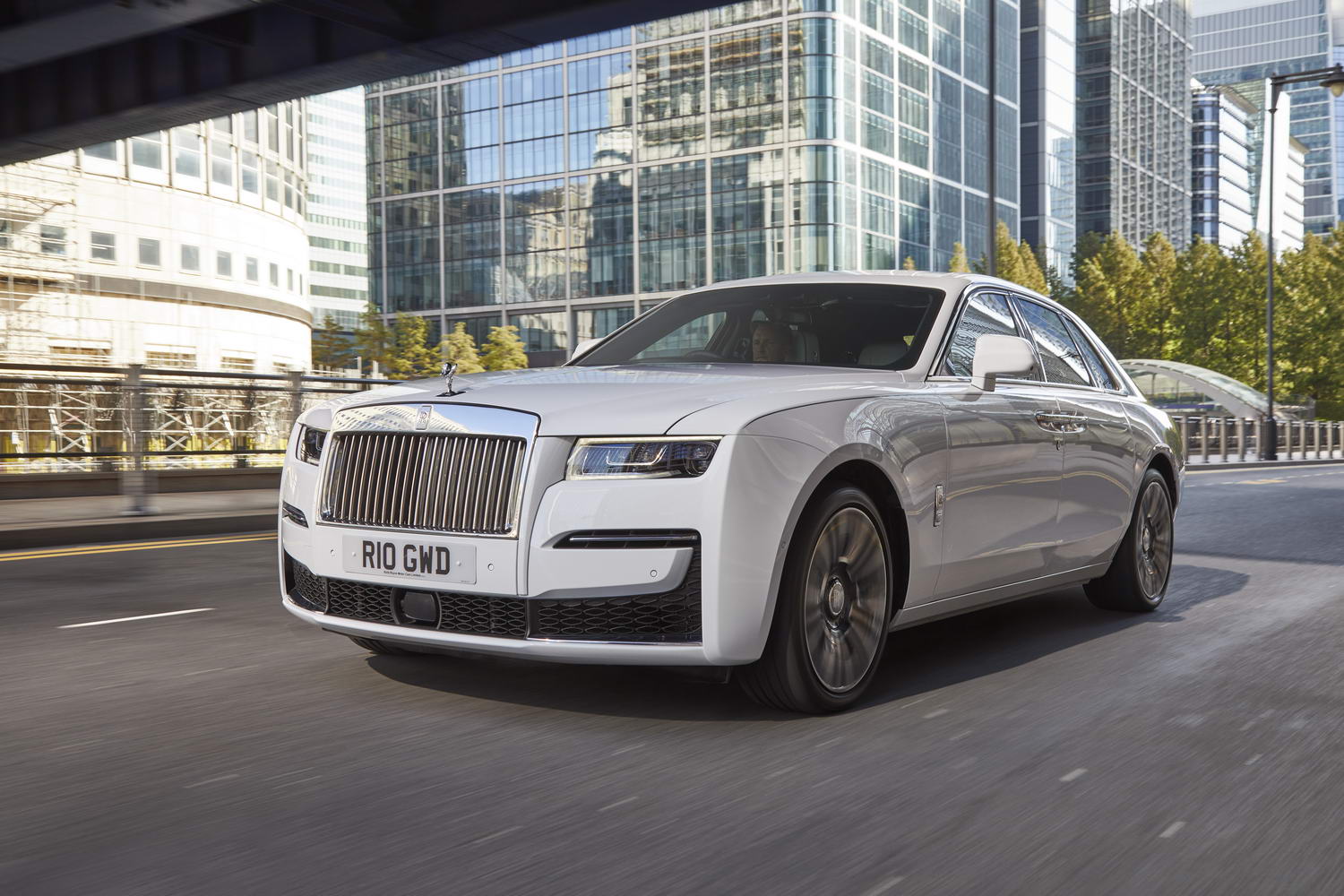According to Bentley, hybrid power is an important part of its range. The Bentayga Hybrid has sold well, and now the Flying Spur Hybrid has arrived to bolster Bentley's eco credentials. But this isn't just an exercise in reducing emissions. With a 544hp hybrid system pinched from Porsche and an electric range of more than 40km, the Flying Spur is designed to work as a town-centre limo for those with an environmental conscience. The petrol-electric powertrain promises much, can it deliver on the road?
In the metal
To the casual observer, the hybrid Flying Spur looks much the same as any other Bentley Flying Spur, with its huge grille, four headlights and the stripe down the centre of the bonnet. Unlock the car and the winged 'B' pops out from under its little cover, while the vents on the front wings and the taillights still have their 'B' signatures. As a result, the only way to tell the Hybrid from its more powerful brethren is via the Hybrid badges. Even the tail pipes, which are normally a key differentiator for Bentley models, look just the same as those fitted to the V8-powered examples.
Nonetheless, wherever it goes, the Spur is sure to draw the eye, if only by dint of its enormity. It's more than 5.3 metres long and it weighs 2.5 tonnes, plus it has inherited some of the chunky styling that makes the Continental GT look so muscular. That design language doesn't suit the Spur quite so well - there's something awkward about the rear end and the bluff nose that doesn't quite sit right for us - but we'd stop short of calling it ugly. Ostentatious but not ugly.
It certainly looks expensive, and it feels it too. The cabin is exactly what you expect it to be, with a mix of old-school design features and modern technology. The seats are wrapped in sumptuous leather and there are valve-style plungers for the air vents, but you still get a digital instrument display and a touchscreen infotainment system. And because they share technology with systems used in Audis and Porsches, they work really well. Despite that, Bentley has refrained from turning the cabin into a tech fest. There are lots of buttons on the centre console, and the steering wheel is almost cluttered. There's little to no dependence on touchscreen tech here.
But the back seats are a little more tech-laden, thanks to the touchscreen control panel in the back of the centre console. Like a mini tablet, the screen can be removed from its housing for easier perusal of settings, allowing many of the comfort- and entertainment-orientated systems to be accessed from the back seats. It's a healthy reminder that this is as much a car to be driven in as a car to drive.
Of course, the artisanship and quality are first-rate, as is the breadth of personalisation options. You can have a vast array of upholsteries, trims and veneers, as well as any number of optional extras and special features. And as is so often the way with Bentley, the colour palette is more or less endless. The company will even produce paint to match an item of clothing or make-up. At a cost, of course.
In that, though, the Hybrid offering is just the same as that of the V8, but there is a key difference in the boot. While the Hybrid's capacious rear seats speak of space and opulence, the boot is slightly less impressive. At 351 litres it's about the same size as that of a Volkswagen Polo, which means there's enough space for day-to-day use, but it might get a bit tight on longer journeys for which more luggage is required. That said, the V8 only has 420 litres of carrying capacity, and that's barely more impressive than most family hatchbacks.
Driving it
The Flying Spur Hybrid's powertrain falls into the 'tried-and-tested' category, having already seen service in various Porsche products and the Bentley Bentayga Hybrid. It's a proven system that works well wherever it goes, combining a powerful 2.9-litre V6 petrol engine with an electric motor to provide all-wheel drive and 544hp. Even in the 2.5-tonne Flying Spur Hybrid, that's enough for an absurd 0-100km/h time of around four seconds.
Nevertheless, this is the least powerful model in the Flying Spur range, and it lacks some of the effortlessness with which other versions are blessed. That's more of a compliment to the V8 and W12 versions of the Flying Spur, rather than an indictment of the Hybrid, though. Even a tickle of throttle sees the car surge forward with conviction and quietness, but there are diminishing marginal returns as you push harder. At full throttle, the engine makes its presence felt with a pleasant but unremarkable V6 snarl, yet it doesn't have the rich sound of the V8 or the smoothness of the W12, and nor does it have the mind-blowing punch of those.
That said, the Hybrid is more than powerful enough for anyone's needs, and the Flying Spur can still gather pace at a remarkable rate. More importantly, though, the Hybrid system offers surprising economy - at least on the official economy test. The 18kWh lithium-ion battery pack offers around 40km of real-world range, and more around town, which means the Flying Spur can do most urban journeys without using a drop of petrol. It even performs well without the help of the engine.
If it suits your needs and you can charge the battery regularly, the official data suggests impressive economy figures for something so big and heavy. Low emissions are good news for everyone except Revenue, and saving fuel will keep everyone happy - even the rich and famous.
But for its supposed eco credentials, the Flying Spur is still all about comfort, luxury and speed. It's a big, heavy car and no amount of engineering nous can hide that, but it's pleasant to drive, even at high speeds. It isn't a car in which you can attack corners as you might in a Continental GT, but the Flying Spur feels magical flowing between the curves at a brisk pace. In any form, it's a terrific grand tourer.
That's partly because of the suspension, which seems to glide over the road surface, particularly when you're going quickly. The low-speed ride isn't bad, but the weight of the car feels like a handicap around town, where potholes make their presence felt. But if you head north of 100km/h and flick the drive mode selector into Comfort mode, the Flying Spur wafts you around in pristine comfort.
In fairness, it isn't a lot less comfortable in Sport mode, which firms up the suspension a little and provides extraordinary body control at speed, but back-seat passengers would probably prefer it if their chauffeur left the car in one of its softer settings. As will most drivers, because although the Flying Spur can accelerate and corner at high speed if it's asked to, it's a little more reluctant to stop. The combination of regenerative braking and a big, heavy car means the brakes lack feel, and though there's enough power to slow you down, you find yourself pushing the pedal a little harder than you might like at times.
What you get for your money
There is no Bentley dealership in the Republic of Ireland, but those desperate to have one can import from Northern Ireland via Charles Hurst Bentley. That said, deep pockets are necessary for any would-be buyers. Our test car came in at just over £236,000, and that's megabucks by any measure. Admittedly, our car had the Mulliner specification with posh wheels and an even more luxurious interior, but once you've got the specification you want and paid all the import taxes, it will likely cost over €400,000.
Summary
Unless you need or want the urban eco credentials, the Hybrid is not the Flying Spur of choice. We'd rather have the slightly punchier V8. But although the powertrain doesn't feel as relaxed as larger alternatives, the Hybrid is ideal for city centre environments, while the combination of V6 engine and electric motor makes it hugely refined without sacrificing performance. As a result, it's well worth its place in the Bentley range.

